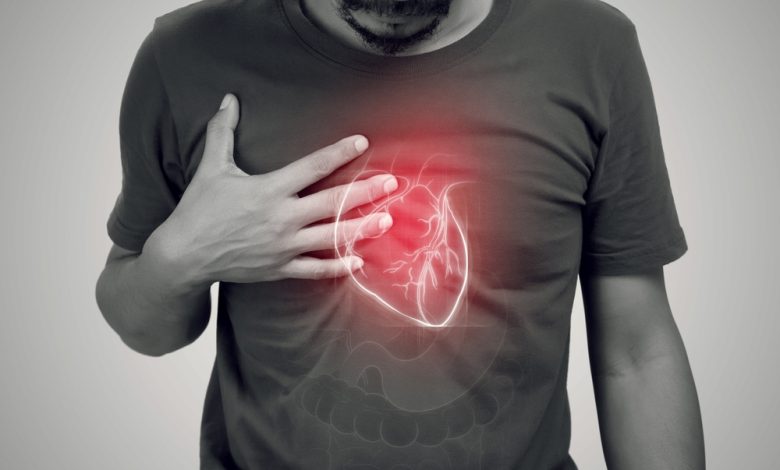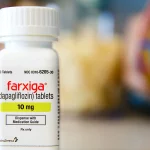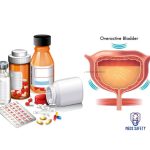Can a Drug for Overactive Bladder Prevent Heart Failure?

The drug mirabegron, used to treat overactive bladder disease, when added to standard treatment did not improve either left ventricular mass index or diastolic function over 12 months among patients with pre–heart failure (pre-HF) structural heart disease who were at risk of developing or worsening HF.
METHODOLOGY
- Interventions for patients with asymptomatic pre-HF may be important in reducing the incidence of clinically overt HF, including HF with preserved ejection fraction (HFpEF).
- Mirabegron activates the cardiac β3-adrenergic receptor, which may offer an alternative activation of the cyclic guanosine monophosphate protein/kinase G (cGMP/PKG) pathway for patients at risk of or with mild HF and protect against worsening left ventricular hypertrophy (LVH) and/or diastolic dysfunction, but few clinical trials have evaluated the effect of mirabegron on cardiovascular outcomes.
- The phase 2b Beta3_LVH trial included 296 patients, some with and some without HF symptoms (mean age, 63 years), at 10 centers in Europe and the UK. All had an increased LV mass index (LVMI) (≥115 g/m2 for men and ≥95 g/m2 for women) or end-diastolic wall thickness of ≥13 mm in at least one wall segment.
- Patients, many of whom had risk factors, including hypertension, and were receiving cardiovascular therapies, were randomly assigned to receive mirabegron 50 mg/d or placebo and underwent various tests, including cardiac MRI, Doppler echocardiography, and urine and blood sampling for fasting glucose, insulin, A1C, serum lipids, and other measures.
- The two primary endpoints were change in left ventricular mass index (LVMI), expressed in grams per meters squared, and change in diastolic function, assessed as the ratio of peak early transmitral ventricular filling velocity to early diastolic tissue Doppler velocity (E/e′).
IN PRACTICE
While this study showed that mirabegron had a neutral effect on LV mass and diastolic function for patients with pre-HF or mild HF, the researchers suggest that longer-term effects of β3-adrenergic stimulation on myocardial remodeling and function “need to be tested in patients with established HFpEF, including with recent, more potent agonists.”
SOURCE
The study was conducted by Jean-Luc Balligand, MD, Institut de Recherche Expérimentale et Clinique, Université Catholique de Louvain, Brussels, and colleagues. It was published online September 20, 2023, in JAMA Cardiology.
LIMITATIONS
Inclusion of patients with mild HF and use of a single standard mirabegron dosage (50 mg/d) may have prevented detection of a treatment effect. More advanced techniques than measurements of E/e′, such as cardiac strain, may have been better for assessing early changes in diastolic function. Although missing data and dropouts were relatively infrequent and were compensated for in the study, these remain limitations.
DISCLOSURES
The study was funded by European Commission Horizon 2020 Framework Programme. Balligand reported receiving grants from the European Commission during the conduct of the study, grants from Novartis and Daiichi-Sankyo outside the submitted work, and consulting fees from Amgen, Novartis, and Daiichi-Sankyo outside the submitted work; he also reported being a minor shareholder of Spinovit srl and serving as a board member for the Wallonia Health and Biotech Cluster, Biowin, and the AstraZeneca Foundation. Disclosures for other authors are available in the original article.
TAKEAWAY
- Neither primary outcome reached statistical significance at 12 months; adjusted differences between groups included a 1.3-g/m2 increase in LVMI (95% CI, −0.15 to 2.74; P = .08) and a −0.15 decrease in E/e′ (95% CI, −0.69 to 0.4; P = .60).
- There was no statistically significant effect of mirabegron in comparison with placebo on lipids, glycemic control, or insulin sensitivity.
- The effect of mirabegron remained neutral in exploratory subgroup analyses, including age (≤65 or >65 years at baseline), sex (men or women), body mass index (≤30 or >30 at baseline), presence of type 2 diabetes, atrial fibrillation, β-blocker use, and geographic region.
- There were no deaths. There was a total of 428 adverse events (AEs), but there were no statistically significant between-group differences in the occurrence of these AEs.





